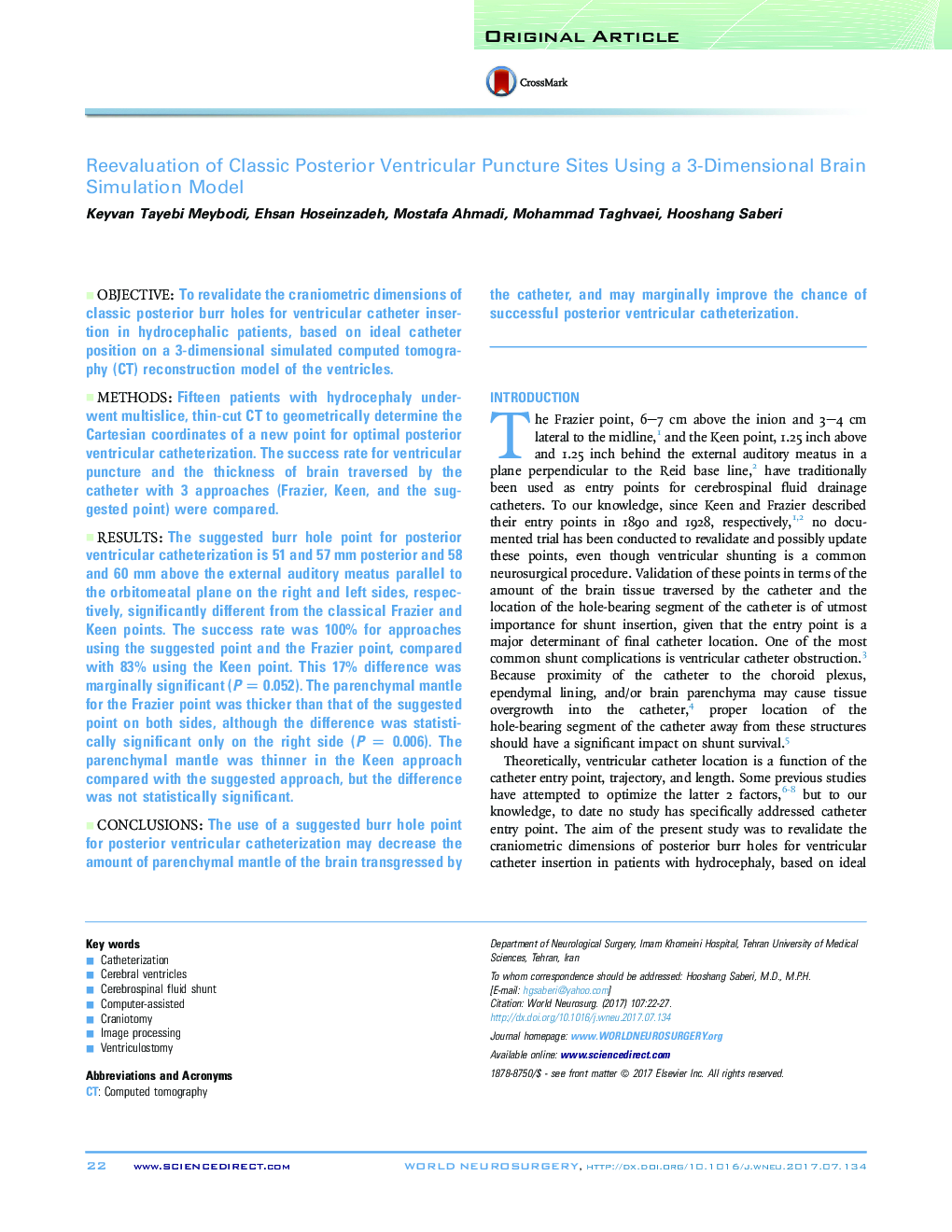| Article ID | Journal | Published Year | Pages | File Type |
|---|---|---|---|---|
| 5633852 | World Neurosurgery | 2017 | 6 Pages |
ObjectiveTo revalidate the craniometric dimensions of classic posterior burr holes for ventricular catheter insertion in hydrocephalic patients, based on ideal catheter position on a 3-dimensional simulated computed tomography (CT) reconstruction model of the ventricles.MethodsFifteen patients with hydrocephaly underwent multislice, thin-cut CT to geometrically determine the Cartesian coordinates of a new point for optimal posterior ventricular catheterization. The success rate for ventricular puncture and the thickness of brain traversed by the catheter with 3 approaches (Frazier, Keen, and the suggested point) were compared.ResultsThe suggested burr hole point for posterior ventricular catheterization is 51 and 57 mm posterior and 58 and 60 mm above the external auditory meatus parallel to the orbitomeatal plane on the right and left sides, respectively, significantly different from the classical Frazier and Keen points. The success rate was 100% for approaches using the suggested point and the Frazier point, compared with 83% using the Keen point. This 17% difference was marginally significant (PÂ = 0.052). The parenchymal mantle for the Frazier point was thicker than that of the suggested point on both sides, although the difference was statistically significant only on the right side (PÂ = 0.006). The parenchymal mantle was thinner in the Keen approach compared with the suggested approach, but the difference was not statistically significant.ConclusionsThe use of a suggested burr hole point for posterior ventricular catheterization may decrease the amount of parenchymal mantle of the brain transgressed by the catheter, and may marginally improve the chance of successful posterior ventricular catheterization.
